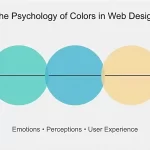Hey there, savvy decision-makers and aspiring mind-benders! Ready to dive into the wild world of cognitive trickery? Buckle up, because we’re about to explore the fascinating (and sometimes sneaky) realm of the framing effect. It’s like Instagram filters for your brain, but way more influential!
What the Heck is the Framing Effect?
Picture this: You’re at a fancy restaurant, and the waiter presents you with two menu options:
-
“Our signature burger is made with 75% lean beef.”
-
“Our signature burger is made with 25% fat beef.”
Suddenly, you’re eyeing that salad menu, aren’t you? Plot twist: It’s the exact same burger! Welcome to the framing effect, folks – where how information is presented can make you question your entire existence (or at least your dinner choice).
The framing effect is a cognitive bias that causes people to react differently to information depending on how it’s presented. It’s like that friend who can make even a trip to the DMV sound exciting – it’s all in the delivery, baby!
Why Should You Care? (Besides Impressing People at Parties)
Understanding the framing effect is like having a superpower in today’s information-overload world. It can help you:
-
Make better decisions (and avoid face-palming later)
-
Become a master persuader (use this power for good, please!)
-
Spot manipulation in marketing and politics (cue dramatic music)
-
Improve your communication skills (bye-bye, foot-in-mouth syndrome)
Framing in Action: Real-World Examples That’ll Blow Your Mind
Marketing Madness
Ever notice how products are “90% fat-free” instead of “10% fat”? That’s the framing effect working its magic on your wallet. Marketers are like the David Copperfields of the business world, making you see what they want you to see.
Pro Tip: Next time you’re shopping, try reframing product claims in your head. You’ll feel like you’ve taken the red pill in “The Matrix”!
Political Persuasion
Politicians are the grand masters of framing. They can make a tax increase sound like a “investment in our future” or frame budget cuts as “fiscal responsibility.” It’s like verbal jiu-jitsu, and we’re all on the mat!
Reality Check: Always look for the other side of the story. If a politician says they’re “tough on crime,” ask yourself what they’re not talking about (education? poverty? rehabilitation?).
Healthcare Hullabaloo
Doctors and researchers use framing all the time. Check this out:
-
“This treatment has a 90% survival rate.” (Sounds great!)
-
“This treatment has a 10% mortality rate.” (Uh-oh, where’s the exit?)
Same treatment, different pants-wetting levels. It’s like medical Schrödinger’s cat – the outcome is the same, but your perception is totally different.
The Psychology Behind the Madness: Why We Fall for It
So, why do our brains fall for this trickery? It’s not because we’re dumb (you’re reading this blog, after all). It’s because our brains are lazy efficiency experts.
-
Cognitive Shortcuts: Our brains love to take the easy route. Framing provides a quick way to process information without deep analysis. It’s like taking the elevator instead of the stairs – quicker, but you might miss out on some good views (and a workout).
-
Emotional Impact: Frames can trigger emotional responses, which often override logical thinking. It’s why “Buy now and save!” works better than “Buy now or you’ll pay more later.” FOMO is real, people!
-
Anchoring Effect: The first piece of information we receive acts as an anchor for subsequent judgments. It’s like when your friend says, “This movie is amazing!” before you watch it – your brain is already biased.
-
Loss Aversion: We hate losing more than we love winning. Framing something as a potential loss can be more motivating than framing it as a gain. It’s why “Don’t miss out!” is more powerful than “Get in on this!”
Framing Techniques: Become the Jedi Master of Persuasion
Want to harness the power of framing for good? (Or for convincing your roommate to do the dishes?) Try these techniques:
-
Positive vs. Negative Framing: Highlight the benefits or the risks. “Enjoy a clean home!” vs. “Don’t live in filth!”
-
Gain vs. Loss Framing: Focus on what can be gained or lost. “Save $100!” vs. “Don’t waste $100!”
-
Social Proof Framing: Show that others are doing it. “Join thousands of happy customers!” (Works great for peer pressure too, not that we condone that… 😉)
-
Temporal Framing: Play with time perspectives. “Invest now for a secure future!” vs. “Don’t regret not starting earlier!”
-
Metaphorical Framing: Use relatable comparisons. “Our software is like a Swiss Army knife for your business!”
Fun Fact: The average person makes about 35,000 decisions a day. That’s 35,000 opportunities for framing to influence you! (No pressure, though.)
The Ethical Elephant in the Room
Now, before you run off to frame the world into your personal oyster, let’s talk ethics. With great power comes great responsibility, and all that jazz.
Framing can be a force for good:
-
Encouraging healthy behaviors
-
Promoting social causes
-
Simplifying complex information
But it can also be misused:
-
Manipulating consumers
-
Spreading misinformation
-
Polarizing political discourse
The Golden Rule of Framing: If you wouldn’t want it done to you, don’t do it to others. Unless it’s for their birthday surprise party. Then it’s okay.
How to Become Framing-Proof (Or at Least Framing-Resistant)
-
Question Everything: Channel your inner toddler and ask “Why?” a lot.
-
Seek Multiple Perspectives: It’s like trying on different pairs of glasses for your brain.
-
Be Aware of Your Emotions: If something triggers a strong feeling, take a step back.
-
Look for the Bigger Picture: What’s not being said? What’s the context?
-
Practice Reframing: Try flipping the frame to see how it changes your perception.
The Bottom Line: Frame or Be Framed
The framing effect is like gravity – it’s always there, whether you notice it or not. But now that you’re aware of it, you have the power to use it wisely and defend against its misuse.
So go forth, young Padawan, and may the frames be ever in your favor! (Too many pop culture references? Nah, impossible.









